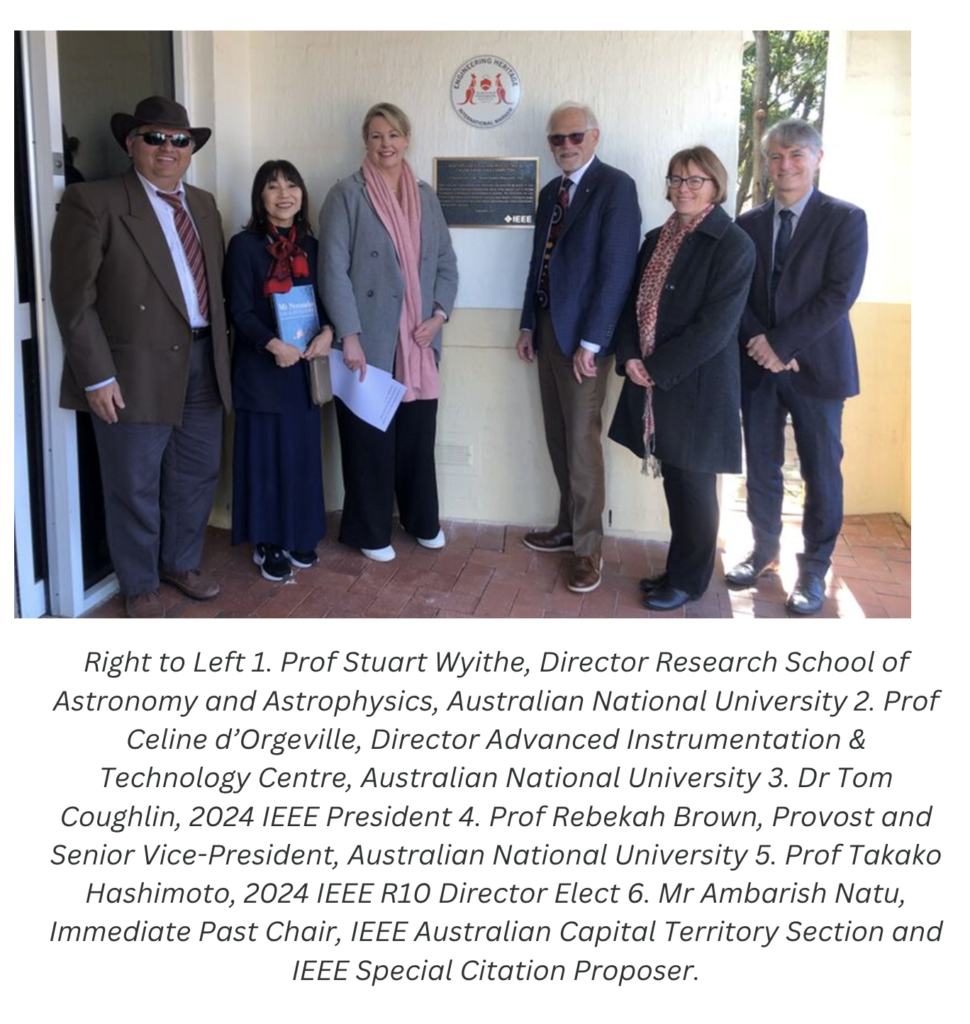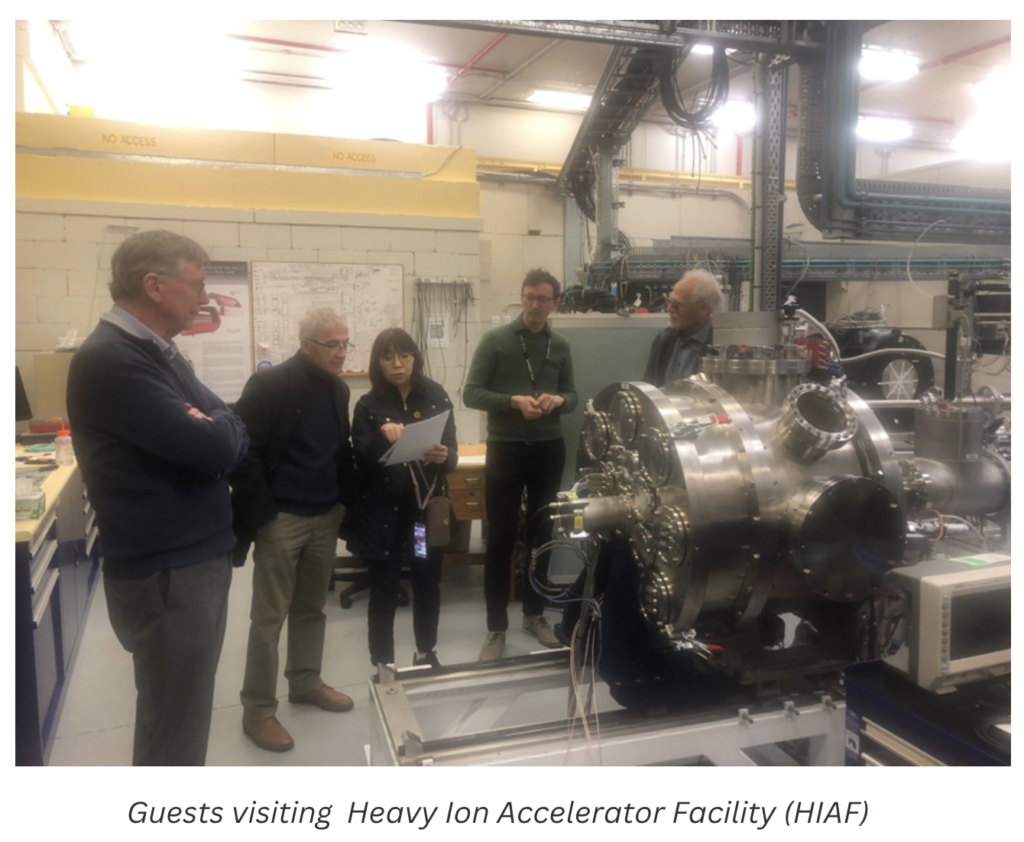By Takako Hashimoto, IEEE R10 Director-Elect
On 3 September 2024, the IEEE Special Citation Ceremony at the Mount Stromlo Observatory, organized by the Australian Capital Territory (ACT) Section in Canberra, Australia was held successfully. This event marked a significant milestone in recognizing the historical importance of the Commonwealth Solar Observatory (CSO) and the engineers who played pivotal roles in its development. The ceremony celebrated the Observatory’s century-long contribution to solar research and the engineering achievements that have sustained it.

Special Citation Overview
The IEEE Special Citation is a recognition established to honor noteworthy engineering contributions in cases where a full IEEE Milestone may not be applicable but where the contributions are nonetheless deserving of special recognition. The Special Citation for the Commonwealth Solar Observatory is particularly noteworthy, as it is the first Special Citation ever awarded in IEEE Region 10. This recognition reflects the observatory’s pivotal role in advancing solar observation and engineering heritage, highlighting its global impact.
The citation process was initiated by Mr. Ambarish Natu, the Immediate Past Chair of the IEEE ACT Section, in 2022. Professor Brian Schmidt and others key supported the nomination. Thanks to their efforts, the IEEE recognized this site in time for its 100th anniversary, honoring the Observatory’s longstanding impact.
Pre-Ceremony Visit and Milestone Achievements
On the day before the ceremony, participants had the opportunity to visit the Heavy Ion Accelerator Facility (HIAF), which is under consideration as the next IEEE Milestone for the region. The visit provided insight into the facility’s contribution to nuclear and atomic research, further underscoring the rich engineering and scientific achievements of the IEEE ACT Section.
After the Special Citation event, participants visited the Deep Space Station, which was the first IEEE Milestone awarded to the ACT Section. This visit allowed me to fully appreciate the outstanding accomplishments of the Section, as it continues to play a vital role in space exploration and engineering innovation.
The ceremony began at Mount Stromlo Visitor’s Centre, where guests, were warmly welcomed by Professor Stuart Wyithe and Provost Professor Rebekah Brown. Following a series of introductory remarks by the Master of Ceremonies, Professor Wyithe, Prof Takako Hashimoto had the opportunity to speak on behalf of IEEE Region 10, underscoring the global significance of the IEEE and our collective efforts to honor sites of such historical value. She emphasized the special importance of this citation as Region 10’s first-ever recognition of this kind.
Mr. Natu followed with remarks about the IEEE Milestone process, emphasizing the collaborative effort that led to this recognition. Dr. Tom Coughlin, President of IEEE, also spoke, underscoring the importance of the citation in commemorating the essential role engineers have played at the Commonwealth Solar Observatory.
The ceremony included a plaque unveiling, conducted by Dr. Coughlin, Prof Takako Hashimoto, Provost Brown, and Professor Celine d’Orgeville, Director of the Advanced Instrumentation and Technology Centre (AITC). Following the unveiling, the attendees participated in a guided tour of the Observatory, including a visit to the AITC, which showcased the cutting-edge research and technology housed at Mount Stromlo.
Special thank goes to the event organizers, particularly Professor Wyithe, Dr. Coughlin, Mr. Natu, Professor d’Orgeville and IEEE ACT Section, for their dedication to making this event a success. Their hard work in coordinating this recognition ceremony not only honored the Commonwealth Solar Observatory’s achievements but also highlighted the importance of continued collaboration between science and engineering communities.
This event holds even greater significance as it marks the very first Special Citation awarded in IEEE R10. This recognition sets a precedent for the future, encouraging further acknowledgment of important historical engineering contributions within the region.
We encourage IEEE members and volunteers to reflect on the role of engineering heritage in shaping our future and actively contribute to preserving sites and achievements like those honored in this Special Citation.




